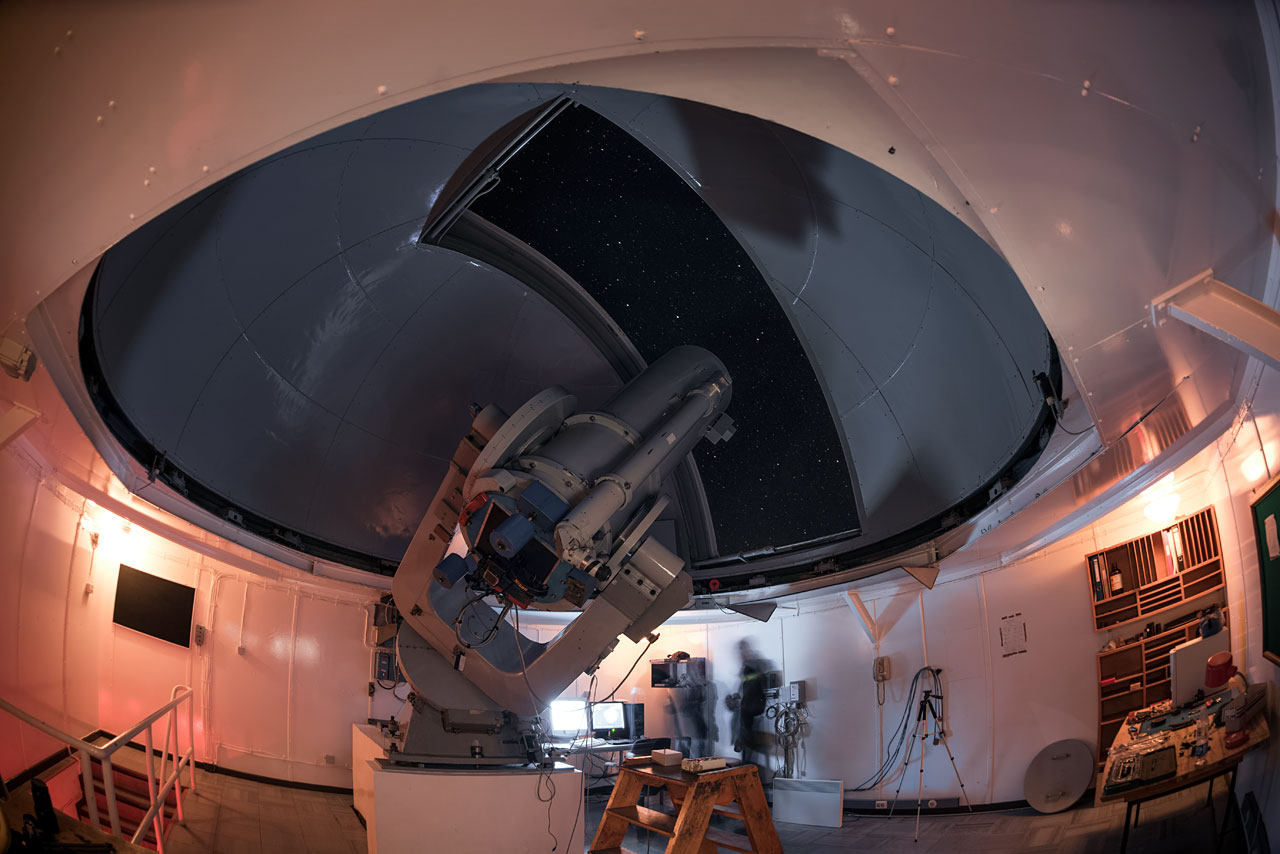Double-Channel Photometer at the ESO 0.5-m
A double-channel photometer was originally installed at the Cassegrain focus of the ESO 0.5-m telescope, replacing the previous Single-Channel Photometer.
The two channels of the the photometer allowed the simultaneous measurement of the intensity of light from two stars, whose separation could range from 9 to 30 arcminutes.
The photometer had two photomultipliers mounted on a sliding rail that could independently move perpendicular to the telescope’s optical axis, allowing the photometer to focus on two particular stars. Each photomultiplier had a diaphragm wheel with five positions. The first position contained a radioactive calibration source, and the other four positions contained diaphragms 0.5, 0.7, 1.0, and 1.5 mm in diameter. These diaphragms constricted the field of view of each photomultiplier to a single star. Each photomultiplier had also a four-position filter wheel containing UVB filters and one open position for white light measurement.
The whole photometer could rotate in order to center the two stars and the star field could be identified using a large field eyepiece with a field of view of 15 arcminutes, an area roughly a quarter of the size of the full Moon.
The Double-Channel Photometer was also used on the ESO 1-metre telescope, and was decommissioned in the 1990s.
Double-Channel Photometer at the ESO 0.5-metre telescopeThis table lists the global capabilities of the instrument.
|
